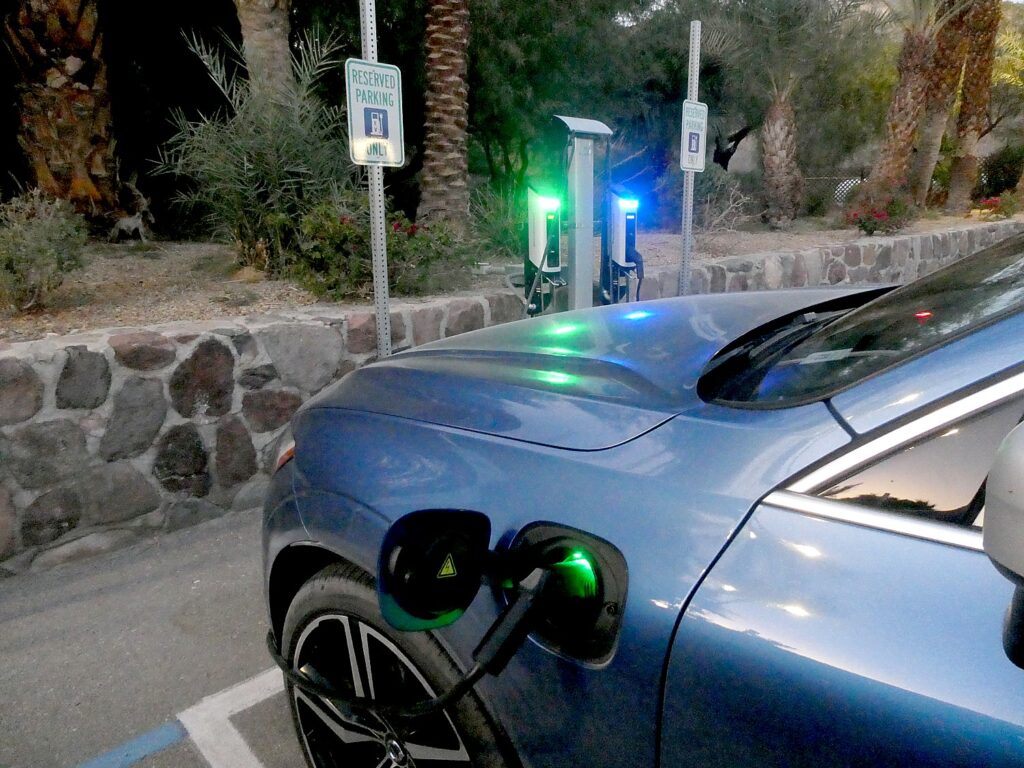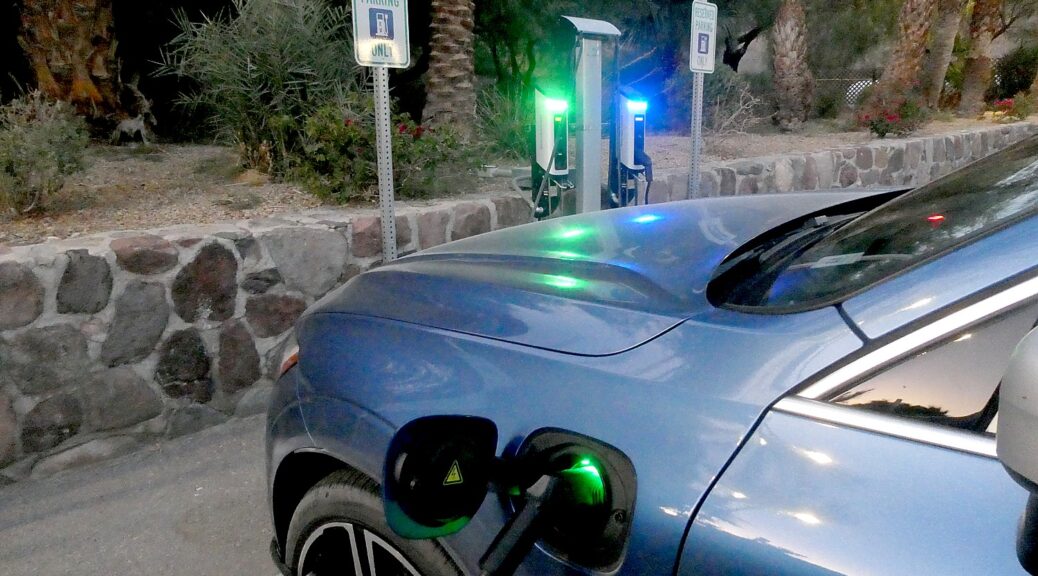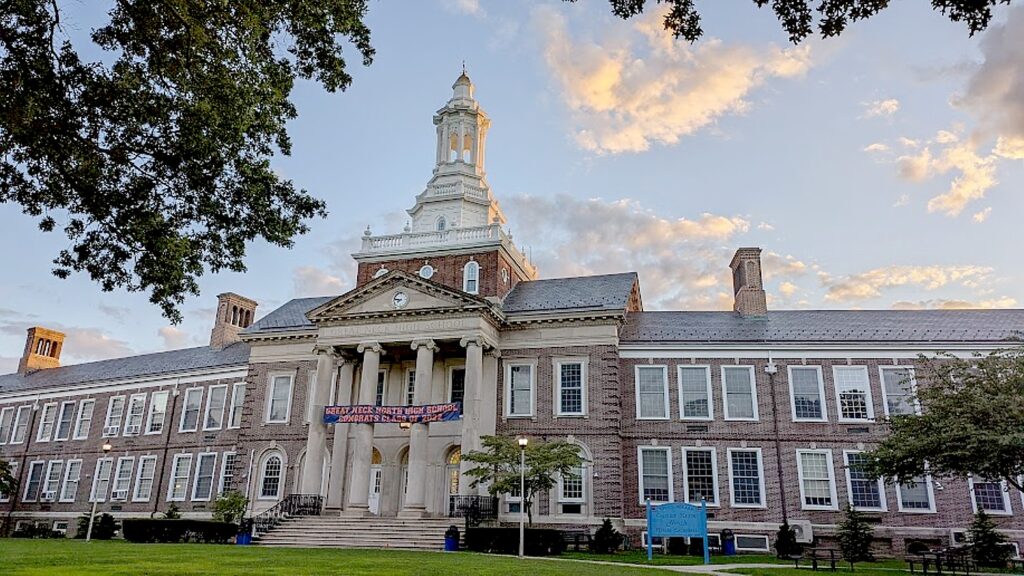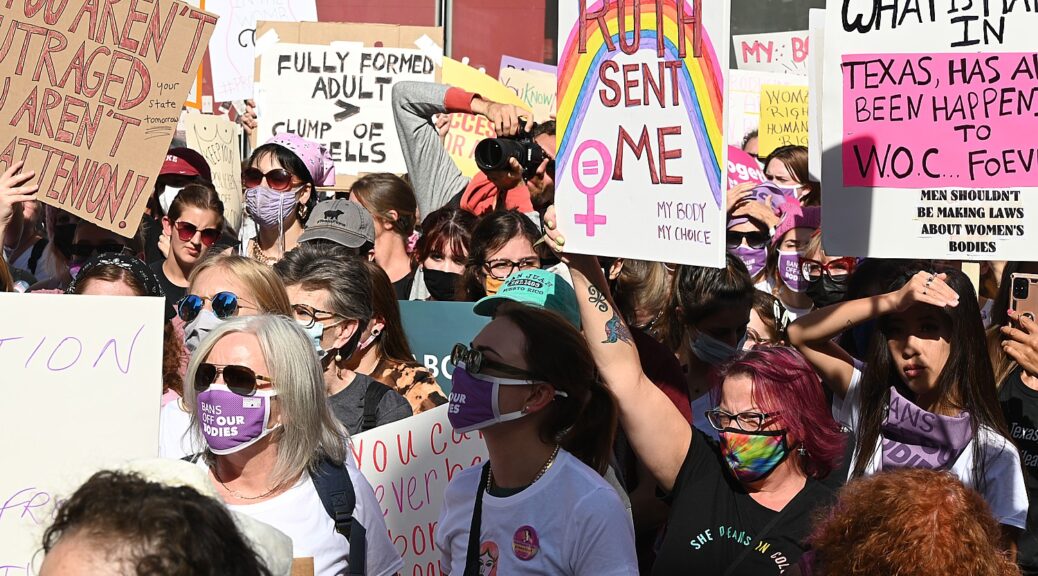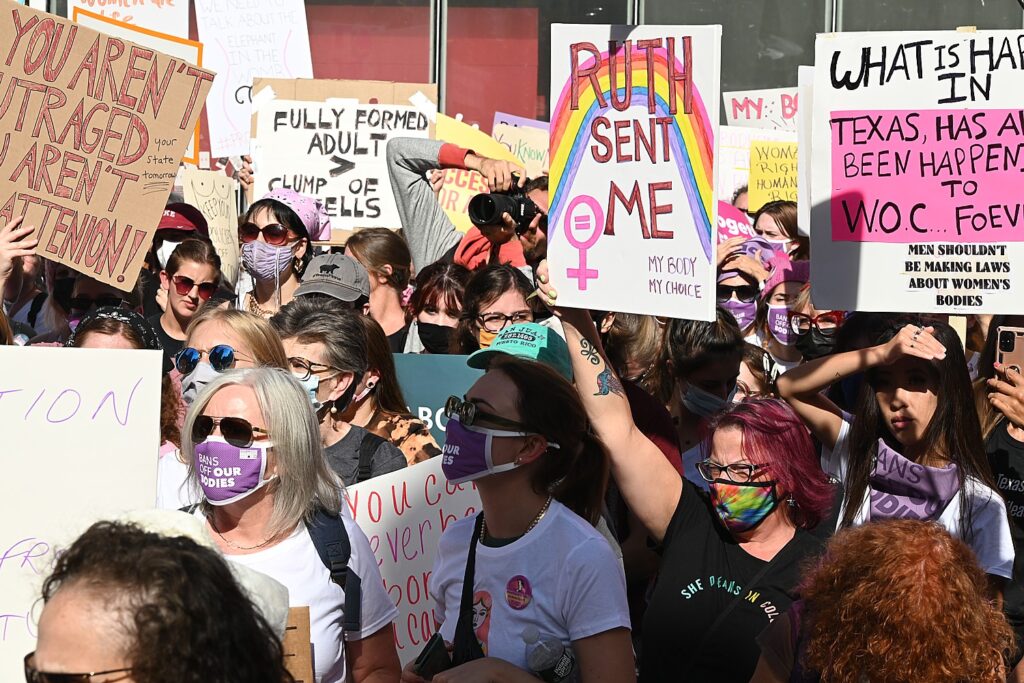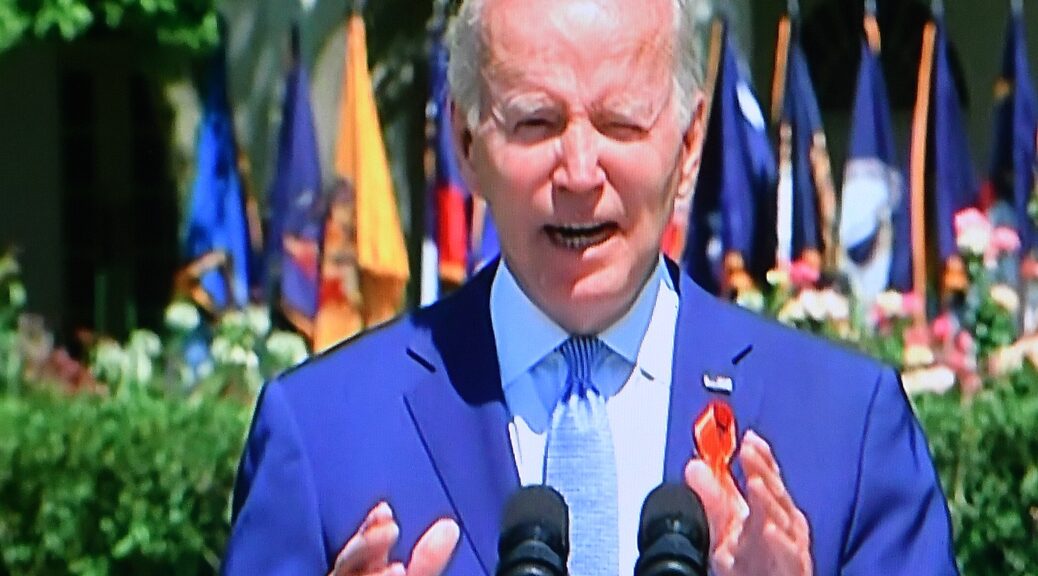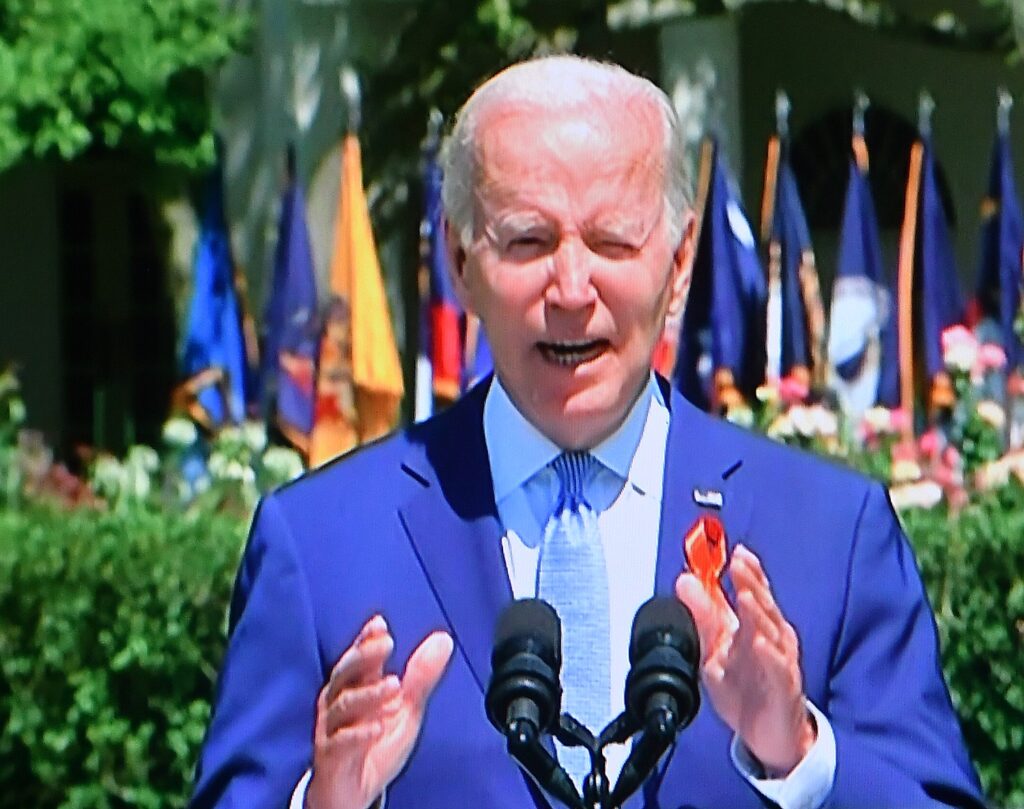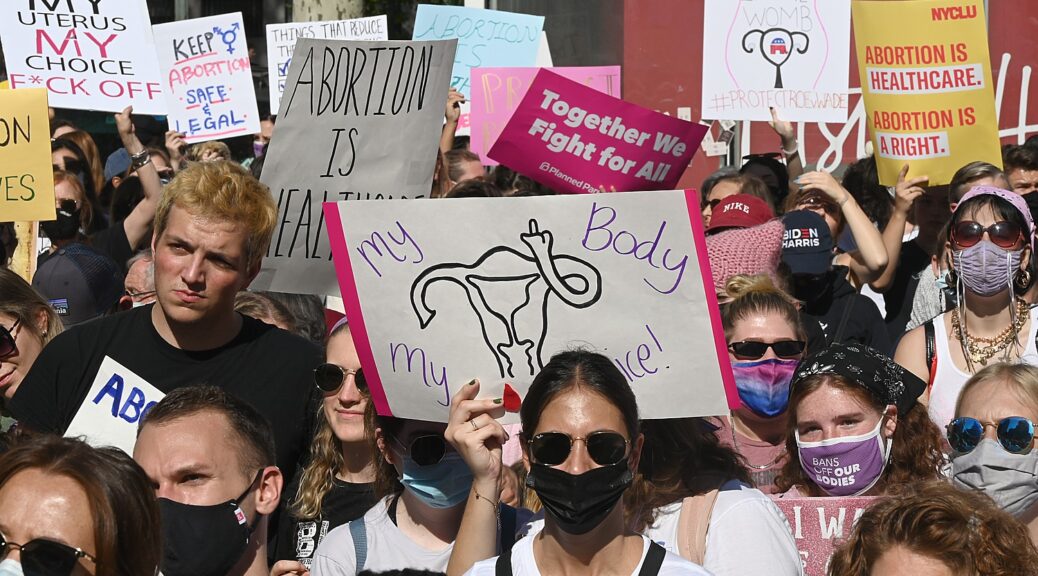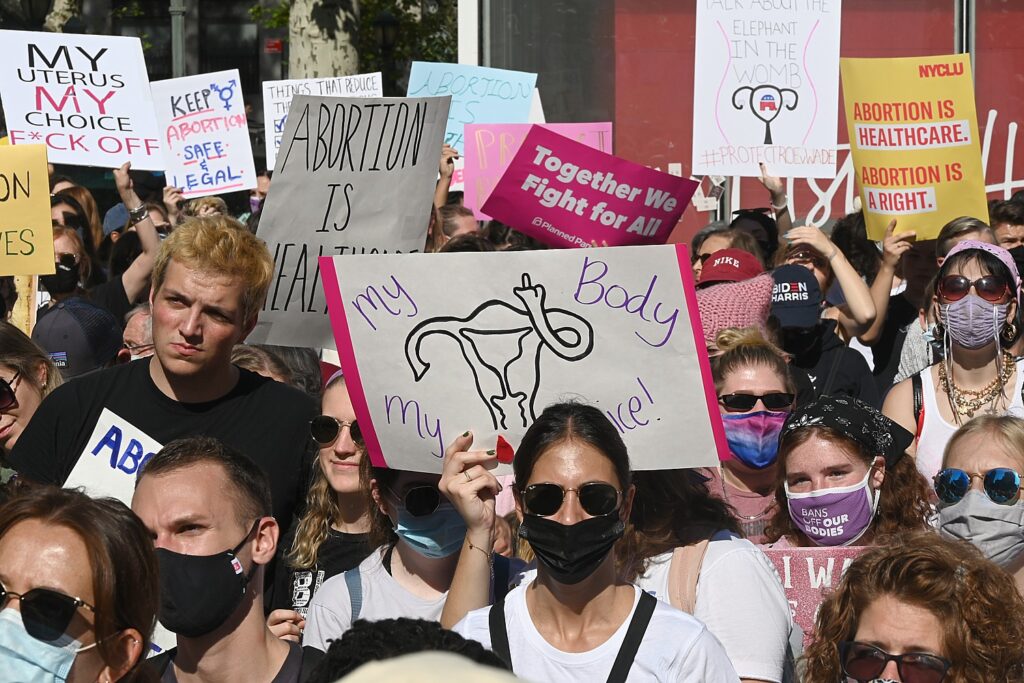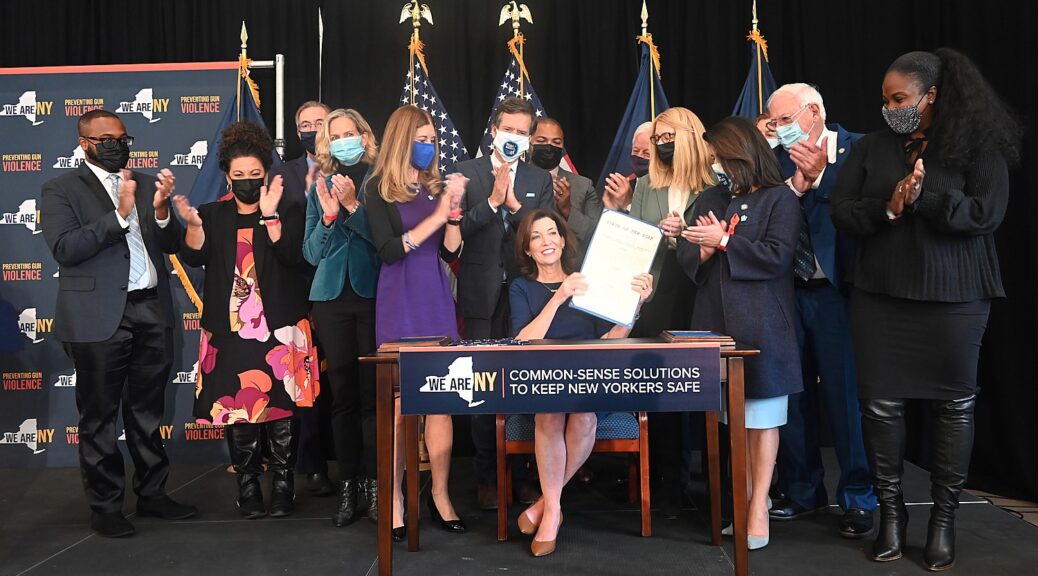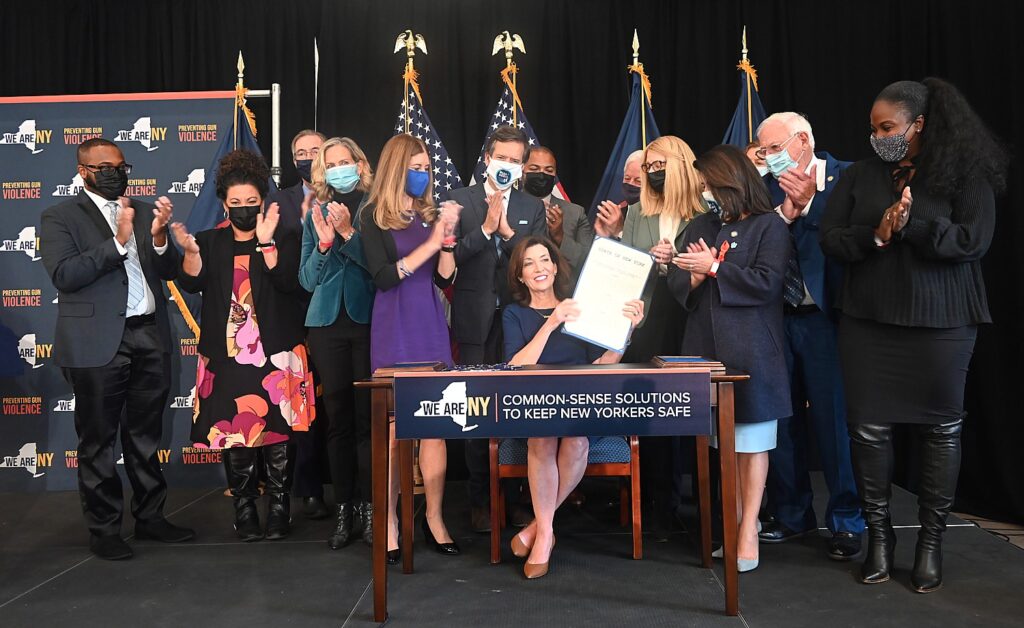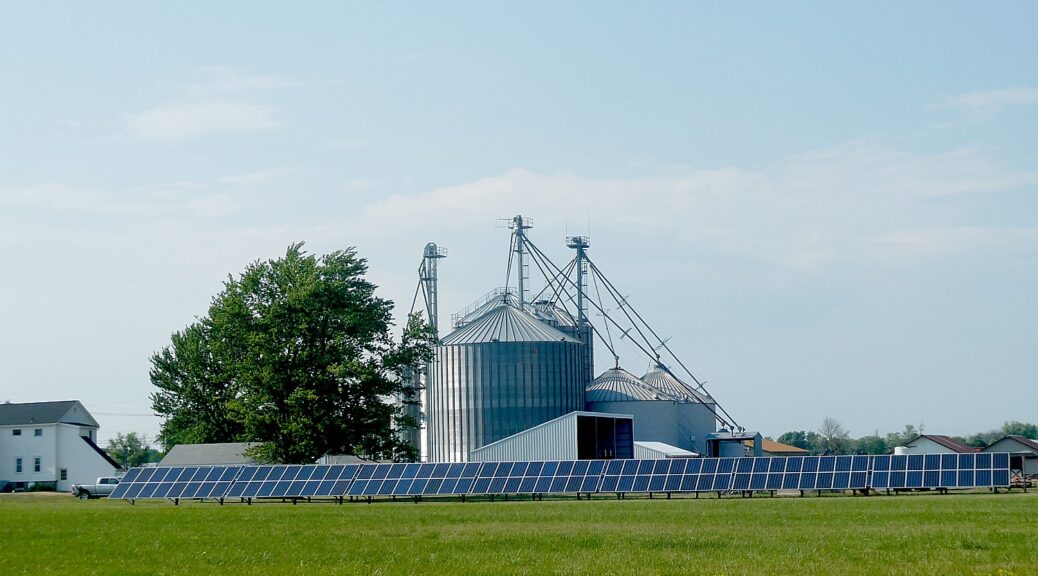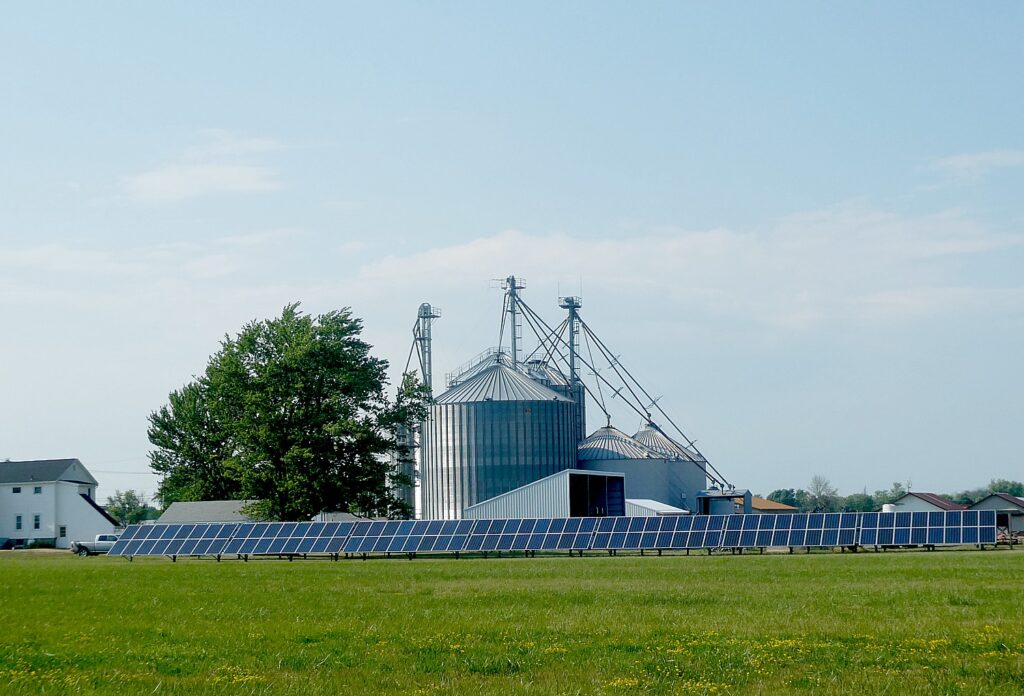The White House announced that over $40 Billion in American Rescue Plan funds have been committed to strengthening and expanding our workforce. White House officials highlighted top American Rescue Plan workforce best practices from Governors, Mayors, and County Leaders across the country, and called on more government officials and private sector leaders to expand investments in our workforce. Vice President Kamala Harris delivered remarks kicking off a half-day White House Summit.
Since passage of the law, states, localities, community colleges, and local organizations have leveraged American Rescue Plan resources to deliver training, expand career paths, encourage more Registered Apprenticeships, provide retention and hiring bonuses in critical industries, and power efforts to help underserved Americans and those who face barriers to employment secure good jobs. These investments in the workforce – along with the American Rescue Plan’s direct payroll support that has saved or restored jobs across a broad set of industries – have contributed to a record 9 Million jobs added since President Biden took office in the fastest and strongest jobs recovery in American history.
The half-day White House Summit on the American Rescue Plan and the Workforce featured remarks by Vice President Harris and Secretary of Labor Marty Walsh, a session on state American Rescue Plan workforce investments with North Carolina Governor Roy Cooper and Pennsylvania Governor Tom Wolf, as well as panels with Mayors, County Leaders, and Labor and Community Leaders on their model American Rescue Plan workforce programs. The Summit focused on three major areas of American Rescue Plan investment:
1. Building a Diverse and Skilled Infrastructure Workforce: President Biden and Vice President Harris have launched the Administration’s Infrastructure Talent Pipeline Challenge to encourage immediate partnerships by the public and private sectors to ensure we have the diverse and strong workforce needed to help rebuild our infrastructure and supply chains here at home with the Bipartisan Infrastructure Law. Today’s session will focus on innovative programs to meet this challenge like the DC Infrastructure Academy, with a special focus on Pre-Apprenticeship programs funded by the American Rescue Plan. Pre-Apprenticeship programs play a critical role in diversifying the talent pipeline by training, placing, and retaining workers through Registered Apprenticeships – which the North America’s Building Trades Unions (NABTU) has cited as having a return on investment for employers of as much as $3 for every $1 invested. The session will feature:
- Washington (DC) Mayor Muriel Bowser
- Louisville (KY) Mayor Greg Fischer
- Los Angeles County (CA) Supervisor Holly Mitchell
- Franklin County (OH) Commissioner John O’Grady
- NABTU Special Assistant to the President Melissa Wells
2. Strengthening Our Care and Public Health Workforce: The pandemic exposed the fragility and importance of our care economy. As part of an unprecedented commitment to a stronger care workforce, the American Rescue Plan contains significant investments in public health and the care economy that will help provide better pay and career opportunities for care workers and make it easier for workers with child and elder care responsibilities to join and stay in the workforce. U.S. prime-age labor force participation has fallen behind that of its competitors, in part due to lack of family friendly policies. Studies show that access to care can be an important determinant of whether workers are able to join or remain in the labor force. Millions of families rely on paid child and elder care to work, while millions more struggle to afford or find available care. The demand for child and elder care remains high and will only grow, with a projected need for over a million additional home health care workers over the next decade. Studies have shown that quality pathways for nursing aides leads to better outcomes for patients and workers. The American Rescue Plan is helping deliver supports for quality pathways for these essential jobs. The session will feature:
- Administrator of the Health Resources and Services Administration Carole Johnson
- Erie (NY) County Executive Mark Poloncarz
- Ramsey County (MN) Commissioner Mary Jo McGuire
- Manchester (NH) Mayor Joyce Craig
- Director of the Communities RISE Together Initiative at the Public Health Institute, Dr. Somava Saha
- SEIU Secretary-Treasurer April Verrett
3. Expanding Access to the Workforce for Underserved Populations: American Rescue Plan funds are being used to recruit more Americans facing barriers to employment – homelessness, disability, prior criminal justice involvement – and giving them pathways into the workforce. More than 600,000 people leave prison every year and confront significant challenges in accessing and sustaining stable, meaningful employment – a 2018 study estimated that formerly incarcerated individuals experience an unemployment rate of over 27 percent, exponentially higher than the overall national unemployment rate. Investments in expanding access to the workforce strengthen our economy by increasing labor force participation and tapping into the potential of more Americans, and research shows that certain programs – such as comprehensive reentry programs and summer youth employment programs – can significantly reduce crime. The session will feature:
- Harris County (TX) Commissioner Adrian Garcia
- Memphis (TN) Mayor Jim Strickland
- Employ Milwaukee CEO Chytania Brown
- WRTP Big Step President Lindsay Blumer
To date, the Administration has worked with states, localities, and other American Rescue Plan recipients to identify over $40 Billion in American Rescue Plan funds being utilized to strengthen and expand our workforce:
Over $13 Billion in American Rescue Plan Workforce Investments Committed or Proposed by Over 1,000+ State, Local, Tribal, and Territorial Governments.
- Over $9 Billion in State and Local Fiscal Recovery Funds committed or proposed investments in workforce programs. This includes hundreds of new workforce development and retention programs, including innovative partnerships with labor groups and other organizations to train and support a diverse workforce for good-paying jobs as well as premium pay programs for essential workers.
- Over $2 Billion in Child Care Stabilization state grants used to increase compensation for child care workers, strengthening workforce development and retention. States have directed or incentivized a commitment of at least $2 Billion from Child Care Stabilization program grants delivered to child care workers in the form of higher pay, hiring or retention bonuses, or other expanded benefits to date — reducing turnover, attracting new workers, and improving the quality, affordability, and availability of care options that enable parents to work.
- $2 Billion in Centers for Disease Control and Prevention (CDC) grants to fund the public health workforce. Emergency funding for public health departments is expected to add thousands of new positions, including 2,400 new school health staff.
Over $16 Billion in Medicaid and Department of Health and Human Services (HHS) Funds for the Care and Healthcare Workforce.
- Over $9 Billion of Home and Community Based Services (HCBS) funds proposed for workforce. These include state plans to increase the pay and benefits of direct support professionals, train workers, and recruit, retain, and expand the workforce to meet the needs of Americans on HCBS waitlists and family caregivers.
- Over $7 Billion in health workforce investments funded by HHS programs. These funds support staffing needs to respond to the COVID-19 pandemic, as well as longer-term investments to strengthen the health workforce and build capacity. These historic investments are recruiting, training, and retaining tens of thousands of additional public health workers over the next several years, including the first-ever Public Health AmeriCorps program which will train a new generation of public health leaders and includes 3,000 corps members in its first year.
Over $12 Billion in American Rescue Plan Education Funds to Strengthen the K-12 Educator Workforce and Expand Workforce Credentials.
- Over $7 Billion in Elementary and Secondary School Emergency Relief Funding to keep schools open safely, combat learning loss, and address mental health are planned to be spent on recruiting, retaining, and training school staff. Districts are expected to spend other funds on workforce efforts, including career and technical education that will help students succeed in the workforce. States across the country are also using a portion of funds to build the pipeline of education workers and provide career and technical education. Additional funds are supporting the hiring and the avoiding of lay-offs of school staff.
- At least $5 Billion to help students stay on track to graduate college and enter the workforce with additional credentials. The American Rescue Plan’s Higher Education Emergency Relief Fund provided nearly $40 Billion to colleges and their students, including to support learning and career training. Community colleges received $10 Billion, with roughly $5 Billion of these funds provided directly to students, allowing them to stay on track to graduate and enter the workforce with additional qualifications.
In addition to investments outlined above, over $3 billion in additional, competitively awarded American Rescue Plan funding will be invested in the coming months, including:
- In 2022, CDC will award $3 billion through a new, first of its kind American Rescue Plan-funded grant program to strengthen the future public health workforce, including offering community health workers and others hired for COVID-19 response support in continuing their careers as public health professionals beyond the pandemic.
- The Economic Development Administration will announce 25-50 grants through the $500 million Good Jobs Challenge to build and strengthen workforce systems that bring together employers and other key entities to train workers with in-demand skills that lead to good-paying jobs.
__
Summaries of American Rescue Plan Best Practices in Workforce Investments Highlighted by State and Local Leaders at White House Summit
1. North Carolina is committing American Rescue Plan funds to address the barriers holding back workers and expand opportunities for careers in high-growth fields offering good wages. Governor Roy Cooper will explain that North Carolina is leading the way with innovative investments to increase compensation for care economy workers and establish and expand work-based learning opportunities in critical sectors. To improve recruitment and retention in care fields, the state is leveraging American Rescue Plan Child Care Stabilization program grants to incentivize and fund increased compensation for tens of thousands of child care workers in the state – reducing turnover and increasing the strength of the workforce – and investing over $200 Million annually utilizing American Rescue Plan-enhanced Home and Community Based Services funding to increase wages for direct care workers. North Carolina is also using American Rescue Plan resources to establish a new Direct Care Jobs Innovation Fund that will support initiatives that improve recruitment and retention among the direct care workforce, including training opportunities and workforce supports. Further, the state is investing American Rescue Plan funds in key workforce efforts, including establishing work-based learning programs supporting small businesses, helping individuals who are justice-involved or in substance use recovery enter the workforce, as well as filling critical infrastructure and supply chain jobs by investing in expanding truck driver training, apprenticeships in high-demand fields, and a work-based learning program in the construction trades across the NC Community College System.
2. Pennsylvania is delivering historic support to its care and healthcare workforce with American Rescue Plan funds. Governor Tom Wolf will discuss how the state is investing in expanded training and credentialing opportunities for direct care workers across the state, improving retention and quality of care. Using American Rescue Plan-enhanced Home and Community Based Services funds, these initiatives include increasing behavioral health provider rates to support state staff training, education, and recruitment, as well as creating an online education and training portal to strengthen supports to nursing professionals. The state is also delivering $225 Million statewide for healthcare retention and recruitment efforts, including payments to direct care staff as well as expanding a high-demand nurse loan forgiveness program. In addition, the state is providing nearly $190 Million through the American Rescue Plan to support retention bonuses, personnel development, and recruitment efforts for its child care workforce.
Building a Diverse and Skilled Infrastructure Workforce
1. Washington, DC is expanding its DC Infrastructure Academy to fill growing DC infrastructure jobs. Mayor Muriel Bowser will describe the DC Infrastructure Academy, which is a key initiative of her administration, launched in 2018 to meet the need for skilled infrastructure professionals in the District. The school coordinates, trains, screens, and recruits residents to fulfill the needs of the DC infrastructure industry, matching graduates to infrastructure jobs with leading companies in this high-demand field. The city is investing over $4 Million to expand the program in preparation for the coming demand for infrastructure workers as a result of the Bipartisan Infrastructure Law.
2. Los Angeles County, CA is investing $10 Million to bolster High Road Training Partnerships (HRTP) and its Worker Equity Fund. Supervisor Holly Mitchell will describe LA County’s American Rescue Plan investment to enhance training programs in high-demand sectors such as construction, transportation and warehousing, manufacturing, technology, and more with an American Rescue Plan investment in High Road Training Partnerships. Bringing together industry, education and training providers, labor, and community groups, HRTPs focus on building long-term career pathways utilizing pre-apprenticeships and apprenticeships, provide family-sustaining wages, and require deep collaboration between employers, workers, education partners, and the workforce system. The pre-apprenticeship program deploys the Los Angeles-Orange County Building Trades Council’s Multi-Craft Core Curriculum and spans 8-10 weeks, and aims to enroll at least 480 individuals in all HRTPs with at least 350 individuals hired in permanent employment. This is part of Los Angeles County’s larger workforce development plan, which includes reducing workforce barriers for youth, enhancing job placement programming for justice-involved individuals and those experiencing homelessness, rapid re-employment, as well as a Worker Equity Fund that provides supportive services and flexible cash assistance for participants in the county’s workforce programs to mitigate barriers to successful participation.
3. Franklin County, OH is committing over $11 Million in State and Local funds to support a number of job training assistance programs, including over $2 Million toward the Building Futures Pre-Apprenticeship Program. Commissioner John O’Grady will explain the county’s investment in Building Futures, a 12-week program designed to help low-income Franklin County residents pursue careers in the skilled construction trades, including electrical work, iron work, carpentry, painting, plumbing, and more, with a focus on recruiting populations that have been historically underrepresented in the trades. More than half of program graduates were TANF-eligible when they first enrolled. Most graduates have gone on to become apprentices and are earning an average wage of over $22 per hour plus benefits – with some earning as much as $30 and $40 an hour. The program, which was developed in partnership with the Columbus/Central Ohio Building and Construction Trades Council, Columbus NAACP, and the Columbus Urban League, provides both “hard skills” training, including safety certification and trade-specific instruction, as well as “soft skills” training, including interpersonal skills and financial literacy, as well as a weekly $250 stipend. Participants are also eligible to receive supportive services offered through Building Futures in average amounts of $1,500-$2,500, depending on a person’s individual needs, to help address barriers like transportation, housing, childcare, and more. At the end of each cohort, participants complete an entrance assessment to progress directly into a Building Trades apprenticeship program. The county also runs an American Rescue Plan-funded Driving Futures program, which fills critically needed positions as licensed drivers in Central Ohio’s construction industry.
4. Louisville, KY is proposing an expansion of its successful Kentuckiana Builds construction program. Mayor Greg Fischer will explain how he is answering the President’s call to action on the Talent Pipeline Challenge by proposing American Rescue Plan funds be deployed to expand the city’s pre-apprenticeship program, Kentuckiana Builds. The program is run by the Louisville Urban League in partnership with the Carpenters Union. The program helps diverse residents successfully complete a 6-week construction training program, which then provides them access to union apprenticeships in partnership with the International Brotherhood of Electrical Workers and the Carpenters Union, as well as other basic construction roles. Since its inception, over 350 individuals have graduated from the program into good construction jobs. The proposed American Rescue Plan investment would enable the Kentuckiana Builds pre-apprenticeship program to serve additional participants. Beyond this proposed investment, Louisville has made a number of American Rescue Plan-funded investments in workforce, including a comprehensive reentry program for formerly incarcerated individuals.
5. North America’s Building Trades Unions (NABTU) is working with state and local leaders to promote American Rescue Plan-funded Pre-Apprenticeship Programs as a critical pathway to Registered Apprenticeship Programs that will help fill the increased workforce needs of the Bipartisan Infrastructure Law. NABTU Special Assistant to the President Melissa Wells will describe how NABTU has closely partnered with state and local governments, construction industry employers, and non-profit organizations to invest American Rescue Plan funds in their Pre-Apprenticeship programs known as Apprenticeship Readiness Programs. This builds on NABTU’s work to create over 190 Apprenticeship Readiness Programs across the country in the last fifteen years, which are a pipeline to multi-year Registered Apprenticeship programs. These programs specifically focus on recruiting and training women, people of color, transitioning veterans, and the formerly incarcerated. NABTU operates over 1,600 Registered Apprenticeship training centers in the United States and graduates at least 50,000 apprentices each year — with over 80,000 graduated in 2019 alone.
Strengthening Our Care and Public Health Workforce
1. Ramsey County, MN is supporting its care workforce through a $1 Million Public Health Career Pathways program and addressing a shortage of quality child care programs by offering new incentives and supports. Commissioner Mary Jo McGuire will describe Ramsey County’s Public Health Career Pathways program, which will increase the public health workforce and lift up low wage earners by offering careers as a registered nurse or community health worker. Selection priority is given to those who live in Ramsey County, are single parents, receiving public assistance, and/or are a member of an underrepresented group in the public health workforce. The program provides: college preparatory coaching and mentoring; reimbursement of tuition, expenses for transportation and/or child care, and other related academic costs; wages to allow participants to enroll full-time; and paid work time to complete coursework. To bolster the child care workforce, Ramsey County is providing bonuses of $1,000 per year and free professional development training to help providers remain open. Additionally, the county is recruiting additional child care educators in the neighborhoods most affected by the child care shortages, offering the training required to achieve a Child Development Associate credential at no cost. Participants will also receive mentoring support provided by experienced child care educators who currently operate high-quality programs and other necessary support for early childhood educators looking to open child care programs.
2. Erie County, NY used $1.6 Million in American Rescue Plan funds to launch a Healthcare Careers Program. County Executive Mark Poloncarz will explain that the county is providing educational grants for training in high-demand healthcare occupations, such of up to $10,000 per student. Students must be enrolled in an approved occupational program, meet certain income requirements, and must currently earn less than $25 per hour. Students enrolled in the program also receive a transportation allowance, child care assistance, and access to an emergency fund of up to $500 for emergencies. Since the program began in October 2021, more than 320 residents have already enrolled in programs offered by the County’s training partners (including Erie 1 BOCES, Trocaire College, D’Youville University, SUNY Erie and Villa Maria College). Given the program’s success so far, the county has dedicated additional funding to sustain and expand the program.
3. Manchester, NH is investing $6 Million in a Community Health Worker (CHW) Program. Mayor Joyce Craig will discuss the city’s investment in the CHW program. The new team is multicultural and collectively speaks 11 languages, in addition to English (Spanish, French, Nepali, Hindi, Swahili, Kinyarwanda, Kurundi, Mandinka, Fula, Wolof, and Yoruba). CHW staff are participating in a CHW Certificate program hosted by the Southern New Hampshire Area Health Education Center. The program will also be working closely with the Harvard School of Public Health to provide occupational health and safety training and technical assistance. CHW staff are proactively working with local community groups and organizations in their assigned neighborhood areas in the City to best serve neighborhood concerns and needs. As this Program is a joint effort between the Manchester Health Department and Manchester Police Department, the two Departments will be creating a structure to support linkages and coordination of efforts across public health and public safety.
4. The Communities RISE Together initiative, supported by WE in the World and the Public Health Institute, is using American Rescue Plan funding to recruit, hire, and train Community Health Workers to work with Black, Native American, Latinx, Asian American/Pacific Islander, immigrant/migrant, and low-income older adult populations in 200+ counties across the country. Director of the Communities RISE Together Initiative at the Public Health Institute Dr. Somava Saha will describe how RISE partners train and engage vaccine ambassadors and promotoras to serve as trusted messengers and connect community members with vaccines and well-being needs, while working to address underlying drivers of health inequities. Together, they have reached over 44 Million people through trusted, often nontraditional, messengers and channels and connected 200,000+ Americans to vaccines and supports like food, rental assistance, and social connection.
5. Service Employees International Union (SEIU) is mobilizing workers across the country to ensure American Rescue Plan funding for HCBS continues to improve conditions for care workers – who are 90 percent women and disproportionately women of color – and to stabilize and grow the care workforce and expand access to high-quality affordable home and community-based care. SEIU Secretary-Treasurer April Verrett will describe how SEIU and its partners are working together to ensure states are using funds to transform care work into good, union jobs that provide benefits and pay enough to support a family. This will help to create a sustainable care workforce and lift entire families and communities who are supported by care work. SEIU and its partners are also working with states to expand training opportunities to both help existing caregivers build additional skills and develop a pipeline of new workers.
Expanding the Workforce by Helping Americans Overcome Barriers
1. Memphis, TN is investing over $20 Million in workforce programs, with a focus on youth employment – particularly for disconnected youth and youth with disabilities. Mayor Jim Strickland will describe the Opportunity R3 (Rethinking, Rebuilding, Rebranding) initiative, established with American Rescue Plan funds, which provides workforce readiness training for disconnected youth ages 16-24. According to one report, the Memphis metropolitan area has among the highest number of disconnected youth in the country, with over one in five youth neither working or in school. The R3 program helps participants develop a career and education plan, and guides participants on issues including job applications and resume work, communication and other soft skills, and financial management. The program also provides broader support to participants, including assisting with opening banking accounts, and has currently seen over 80 percent of graduates stay on track on their career or educational path. Additionally, the city is using American Rescue Plan funds to pilot “I Am Included,” a program for youth with disabilities. The program helps youth between ages of 14-18 with specific disabilities – including those who are deaf and hard of hearing or visually impaired, or with specific learning disabilities and intellectual disorders – develop soft and hard skills to prepare for gainful employment and other post-high school options. Topics discussed in the program include financial literacy, personal/professional development, conflict resolution, self-advocacy, goal setting, and mental health awareness. These programs are part of Memphis’ broader investment in workforce development, which includes several other youth employment training programs.
2. Harris County, TX is committing over $2 Million in American Rescue Plan funds toward Employ2Empower (E2E), a workforce program that employs unhoused individuals living in encampments. Commissioner Adrian Garcia will explain how American Rescue Plan funds have enabled the E2E program to expand from a one-precinct pilot into an expanded county-wide program, which is estimated to serve 160 individuals in four separate cohorts over 12 months. The initial precinct-level pilot compensated participants at $10 per hour, and the expanded E2E program employs these individuals for up to 32 hours a week, at a pay rate of $15 per hour, while providing access to resources to meet their basic needs. The work includes graffiti removal, illegal dumping abatement, and upkeep of public properties. Participants will also work alongside previously unhoused individuals who will serve as their Peer Mentors to provide motivation and support. E2E provides steady income and workforce development training, and connects participants to a pathway to a permanent housing solution, wrap-around services, and additional benefits, including ID services. The program implementation and management utilize inputs from Career and Recovery Resources (CRR), partner organizations, and the Harris County Sheriff’s Office. By utilizing lessons learned from the pilot program, the goal is to provide a consistent stabilizing experience for program participants, who require time and intensive support to alleviate the effects of experiencing homelessness. The program is a pre-employment program intended to support individuals in graduating into higher-skilled programs and addresses racial disparities in homelessness and unemployment by reaching out to marginalized groups with 48% of participants being African American.
3. Employ Milwaukee and WRTP|Big Step are deploying American Rescue Plan-funded worker development programs by targeting underserved communities in Wisconsin. Employ Milwaukee CEO Chytania Brown will explain how the local workforce development board, with a $5 Million American Rescue Plan grant from Wisconsin, launched a new Skillful Transitions program aimed at connecting traditionally underserved groups to jobs. The program provides an individualized assessment of skills, experience, and job readiness, and provides job readiness training, skills training, and paid work experience across a variety of sectors, including construction, manufacturing, financial services, healthcare, and more. The program conducts targeted, specialized outreach to at-risk populations, including justice-involved individuals (pre- and post-release), veterans, individuals with disabilities, and human trafficking survivors. Employ Milwaukee also provides wraparound supports and targets high-unemployment and dislocated city residents for its other American Rescue Plan-funded programs, such as a $3 Million investment by Milwaukee into lead abatement certification training – where there is an overall goal of serving a majority of people of color with a special emphasis on opportunity youth.
President Lindsay Blumer of WRTP | BIG STEP, a non-profit workforce intermediary in Wisconsin, will describe how her organization has used American Rescue Plan funds to expand the workforce in construction, manufacturing, and adjacent emerging sectors. In three programs funded by Milwaukee and Wisconsin’s American Rescue Plan dollars – which include a manufacturing high school equivalency degree joint pre-apprenticeship, after-school youth construction career exploration and hands-on training, and a community resource navigator program – the organization focuses on recruiting those who are underserved or not traditionally represented in these occupations, such as those individuals who are justice-involved, veterans and/or identify as differently abled. Critically, once enrolled, the organization provides a variety of barrier remediation and supportive services, such as food share and child care vouchers, focused mentoring and tutoring, as well as legal support, such as driver’s license recovery. The organization directly connects participants with employers for access to family-sustaining waged careers. Close to 100 percent of its participants are considered underserved or traditionally unrepresented, with about 70 percent identifying as people of color and a majority as low-income.
APPENDIX: Additional Examples of States, Cities, Counties, and Community-Based Organizations Using American Rescue Plan Funding to Invest in Our Workforce
Building a Diverse and Skilled Infrastructure Workforce
- Syracuse, NY is expanding access to union job opportunities to prepare the local workforce for infrastructure and other jobs. The City is investing in the Syracuse Build Pathways to Apprenticeship Program to help residents gain access to pre-apprenticeship programs and credentials in high-demand sectors, including construction, electrical mechanics, HVAC, advanced/high-tech manufacturing, commercial driving, and software development. The program will help ensure the local workforce is ready for the I-81 viaduct project and other construction projects. The program is a collaboration of the Central and Northern New York Building Trades Council, CenterState CEO, and Syracuse Build, and teaches the nationally recognized North America’s Building Trades Unions (NABTU) Multi-Craft Core Curriculum. The comprehensive apprenticeship readiness training program focuses on women, people of color and veterans, and helps them gain access to the Building Trades’ registered apprenticeship programs.
- Gallatin County, MT is committing $2 million to start or expand up to seven new workforce training and education programs in the high-demand trades of construction, welding and fabrication, manufacturing, and healthcare. The program, which is operated through Gallatin College Montana State University, has a goal of enrolling over 450 additional students by 2024. As an example, the construction trades program includes concrete, framing, electrical, earthwork, equipment maintenance, and HVAC-R, with the aim of meeting new project demands due to the Bipartisan Infrastructure Law. The program will recruit locally affected residents and place students into local jobs once trained, partnering with local industry partners for development, partnerships, and placements. Further, the program will provide training that will allow students to continue working in apprenticeships or provide certificates and degrees in an accelerated approach. The program will also provide evening childcare to students while they attend classes.
- Vermont is building a broadband workforce. The state is leveraging a portion of their $150 million Vermont Connectivity Broadband Fund to create a training program in partnership with the Vermont Technical College and a broadband installer apprenticeship program. The program, which has already graduated three classes of early participants, is aimed at helping people with insufficient- or low-income jobs transition into higher-paying fiber-optic technician careers. The program pays students while they attend training and offers wraparound services like childcare. In addition, Vermont is making other critical investments in workforce, including through practical nurse training and providing scholarships and wraparound supports for residents economically affected by the pandemic.
- Maine is leveraging American Rescue Plan funds toward its goal of 30,000 clean energy jobs by 2030, including through an apprenticeship program. The state is investing $5.5 million in a Clean Energy Partnership to provide career training opportunities, including apprenticeships, in Maine’s growing clean energy sector. This is part of Maine’s goal of 30,000 clean energy jobs in the state by 2030. The funding will expand existing and develop new apprenticeship opportunities for in-demand clean energy fields, with a focus on increasing apprenticeships among under-represented communities, and convene state agencies, private-sector partners, Maine’s community colleges, and labor organizations to develop programs and tools to grow the clean energy workforce in the state. This investment is part of Maine’s overall comprehensive investment into workforce through American Rescue Plan-funded Maine Jobs & Recovery Plan, which includes a general expansion of high-quality pre-apprenticeships and apprenticeships in high-priority areas, including infrastructure (construction, broadband, logistics, trades) and manufacturing. This expansion is done in collaboration with Maine’s businesses and industry associations, unions, education and training providers, and community-based organizations.
- Wilmington, DE is expanding its high school construction training program. The city is leveraging American Rescue Plan funds to expand their Howard High School of Technology workforce development program, which includes funding high school and adult training in construction, plumbing, HVAC, and more. The city is connecting graduates from the Howard High School training program to jobs with local employers working on local revitalization projects, and soon Bipartisan Infrastructure Law-funded infrastructure projects – helping residents train for better jobs and helping employers access the talent they need to successfully complete these government projects. The city has also committed to using their local workforce for American Rescue Plan-funded neighborhood revitalization projects.
- Nassau County, NY is committing $10 million in workforce development initiatives, including through apprenticeship programs for various key skilled workers needed in the construction and building trades. The initiatives will also provide entrepreneurial skills training to support new women- and minority-owned businesses, and retraining and upskilling programs through Nassau’s local colleges and universities. These programs provide both job training and job placement, and will prioritize reaching residents in communities facing higher rates of unemployment.
- The Mescalero Apache Tribe is investing in a workforce development program that will focus on vocational education by providing scholarships to both Tribal citizens and current employees to obtain certificates and further education in welding, carpentry, plumbing, and electrical – all jobs critical to carry out the Tribe’s COVID-19 recovery plan.
Strengthening Our Care and Public Health Workforce
A. HOME AND COMMUNITY BASED CARE
- Colorado is developing a standardized curriculum and training program for home care workers to establish quality standards and increase specialized qualifications tied to wage increases. The state also plans to establish a training fund that will target high demand jobs and support specialization and advancement opportunities, including in behavioral health. Separately, Colorado is spending funds for training and improving employment outcomes to support reskilling, upskilling, or next-skilling, including providing access to short-term training to obtain in-demand industry-recognized credentials. The funding will also support grants that promote innovation to improve employment outcomes for workers and outreach to underserved and disproportionately impacted populations.
- California will expand training opportunities for its HCBS workforce. One-time training opportunities will include learning pathways in the areas of general health and safety and caring for recipients with specific needs. Training and stipends will also be available in order to both improve care quality, address worker shortages, and prevent unnecessary institutionalization.
- West Virginia is increasing pay to home and community-based care workers, including through incentives such as retention bonuses, hiring bonuses, and increased benefit packages. West Virginia also plans to provide specific training for respite providers on how to assist family members with their children’s behavioral health needs and competency-based training opportunities for the state’s direct-care in-home workforce.
- Georgia will increase compensation for home and community-based care workers and expand training opportunities. The state plans to use American Rescue Plan funds to strengthen existing HCBS services by increasing rates, conducting a rate study for services provided in 1915(c) waivers, and engaging in workforce development and training. Georgia will also expand HCBS training and workforce development programs, including collaborating with GA’s Technical College System to strengthen the Certified Nursing Assistant training program and expand provider capacity.
B. HEALTHCARE
- Chicago, IL is getting people back to work and building a healthcare career ladder. The city invested $56 million to hire local vaccine ambassadors/contact tracers/ supervisors and provide them with broader healthcare training. The ‘Earn and Learn’ program is building a community-based health workforce, building the skills of residents in communities most experiencing economic hardship in the healthcare jobs we need tomorrow, while supporting critical health needs in the community today. More than 800 individuals have been hired through this program, with 90 percent of individuals residing in community areas of high or medium economic hardship.
- New York City, NY is building a corps of community health workers across the city, investing $50 million in expanding their Public Health Corps of Community Health Workers. These individuals will educate New Yorkers on health matters, connecting them to essential healthcare services and enabling them to meet their health goals. The Health Corps is supporting New Yorkers at the community level in clinics and organizations serving the neighborhoods most affected by COVID-19, helping fight against the health disparities exacerbated by COVID-19.
- San Diego County, CA has committed almost $30 million since the start of the pandemic, utilizing an estimated $8 million in American Rescue Plan funds to develop and deploy a new comprehensive Community Health Worker (CHW) model. During the COVID-19 pandemic, the County quickly mobilized CHWs to provide tailored outreach and education to residents who have been traditionally hard to reach due to factors such as linguistic and cultural differences, geographic isolation, or historic distrust of government. As trusted messengers, CHWs are connecting communities impacted by long-standing health disparities to needed services and systems of care. Over 250 CHWs have been deployed, who speak 26 languages, and serve all six regions of San Diego County. They focused on underserved and under-immunized communities, including Black and African American, Latino, refugee, and Asian and Pacific Islander communities.
- Rochester, NY is launching a Healthcare Workforce Resiliency Program. The city is launching a Healthcare Workforce Resiliency Program, which provides entry level healthcare workers with employment skills training and career pathway navigation to achieve licensure and/or certification. Academic assessment services and case management, including stipends and wraparound services, will be provided throughout the program.
- Kansas is retaining and recruiting healthcare workers. The state is investing $50mm in hospitals across the state to help retain dwindling workforce. Each of the 118 hospitals receiving the funding can individually decide to use the funding for either premium pay or for funding a custom program designed by the facility to improve the retention of nurses and other support personnel.
- Connecticut is creating new public health career opportunities for both students and existing workers. These include: establishing new paid public health research assistant and internship opportunities for students pursuing a public health master’s degree; providing staff that can support workforce development and training needs within local health offices; and offering training opportunities and curriculum to expose high school and undergraduate students to public health practice careers.
- Family Scholar House in Kentucky plans to hire 200 part-time AmeriCorps members to provide healthcare support and services to seniors and disabled individuals in healthcare facilities across Kentucky. These AmeriCorps members will develop healthcare knowledge and complete credentialing coursework, enabling them to work in memory care, skilled nursing, assisted living, and other healthcare-related environments.
- DeKalb County plans to hire 16 full-time AmeriCorps members to manage and operate programs across the county. The AmeriCorps members will provide capacity, support, and increased awareness of COVID-19 testing and vaccinations to support equitable health outcomes and COVID-19 recovery in underserved communities.
- The Association of Asian/Pacific Community Health Organizations used American Rescue Plan funds to establish the Community Health Worker Workforce Collaborative. The Collaborative has since hired, trained, and deployed more than 250 Community Health Workers who speak over 36 Asian, Native Hawaiian and Pacific Islander languages in 12 continental U.S. states and Hawai’i.
- Vermont Trauma, Resilience, and Equity Education (VT-TREE) Initiative at University of Vermont is developing and expanding Vermont’s behavioral health workforce. These efforts are focused on children, adolescents, and transitional age youth. VT-TREE is recruiting social workers and counselors from historically underrepresented communities to obtain a Certificate of Graduate Study in Trauma Informed and Resiliency Based Practices.
- Loma Linda University is using American Rescue Plan funding for trainees to develop integrated behavioral health and child clinical skills. The training program teaches pediatric residents and behavioral health students to collaboratively offer mental health access.
Hudson Headwaters Health Network in Queensbury, NY is a community health center that has used American Rescue Plan funds to strengthen its workforce. These efforts include recruitment and retention bonuses to maintain the existing healthcare workforce, and to recruit new providers in specialty areas like rheumatology and endocrinology. The health center has also used this funding for training in a variety of areas including customer service and de-escalation, wellness, and change management and leadership.
C. HISTORIC SUPPORT FOR CHILD CARE WORKERS
- Maine is providing $2,400 for child care workers through monthly bonuses over the course of twelve months. Maine is requiring child care programs benefiting from American Rescue Plan Child Care Stabilization grant funds to provide at least $200 per month bonuses to an estimated 6,000 staff who directly care for children. As a result of investments of American Rescue Plan funds and other resources, including in strengthening its child care workforce, Maine has seen an increase in its licensed child care capacity since the start of the pandemic.
- Michigan is delivering bonuses to more than 38,000 full- and part-time child care staff. Michigan is using American Rescue Plan funds to pay two rounds of $1,000 bonuses to full time staff members and $500 bonuses to part time staff members as part of its Child Care Stabilization program.
- Delaware is supporting the construction of an Early Childhood Innovation Center and expanded supports for child care professionals. Utilizing American Rescue Plan funds, Delaware is investing in the construction and launch of an Early Childhood Innovation Center at Delaware State University—a historically black, public university—that will provide career advancement opportunities for the child care workforce and expand financial support to help professionals pursue careers in early childhood education.
- Deschutes County, Oregon is investing in efforts to increase the supply of licensed child care workers as part of an effort to make child care more readily available. Deschutes County is leveraging American Rescue Plan funds to support efforts to quickly build up the supply of child care by training 275 new workers in the field while investing in the development of new and expanded child care facilities—aiming to create an additional 500 child care spots regionally. The county is investing in a program to fast-track workers through training programs at the local community college and university, as well as efforts to make it easier for interns pursuing credentials to qualify as head teachers upon completion of their programs, and supporting the annual recruitment, advising, education and supervision of teacher candidates.
- The State of Alabama is awarding bonus payments to over 10,000 child care workers. With Child Care Stabilization Grant funds provided in the American Rescue Plan, Alabama is providing quarterly payments of $1,500 for full-time staff and $750 for part-time staff for up to two years.
- The State of Kansas is providing more than 22,000 child care workers with bonus payments of up to $2,500. Kansas is committing $53 million in American Rescue Plan funds to supporting one-time bonuses of between $750 and $2,500 to an estimated 22,650 early childhood care staff members across the state.
Expanding Access to the Workforce for Underserved Populations
- Wisconsin is funding a comprehensive worker development program, including for incarcerated individuals. The state is investing in a $125 million comprehensive workforce program to help address the state’s post-pandemic workforce needs through a competitive grant program. Awards include up to $5.7 million to deliver workforce-ready curriculum through the University of Wisconsin Prison Education Initiative (PEI) to teach employable skills to students while incarcerated and continue supporting them post-release through program completion and career placement. Further, the state is investing up to $5.6 million through Gateway Technical College to offer a 4-week pre-HSED (High School Equivalency Diploma) program, followed by a 16-week Work Ready (WR) HSED program. This program encourages a collaborative approach to addressing the biggest regional workforce challenges, training workers in high-demand fields such as healthcare and manufacturing, providing innovative credentialing options, expanding childcare, and building the entrepreneurs of tomorrow. Additionally, Wisconsin is investing in the Worker Connection Program, which helps individuals overcome systemic barriers, navigate the workforce system, and match them with employers that ultimately leads to careers with growth potential, as well as the Worker Advancement Initiative, which uses the state’s workforce development boards to help unemployed individuals find subsidized opportunities through collaborations with local employers.
- Detroit, Michigan is establishing a Skills For Life program: The city is committing up to $75 million toward Skills for Life, which is a training, career readiness and education program potentially targeting thousands of unemployed or underemployed Detroit residents, specifically those experiencing housing insecurity, those lacking high school diplomas and/or post-secondary credentials, returning citizens, and other populations that face barriers to employment. Skills for Life combines education and training with wrap-around support services (e.g., childcare subsidies, transportation, construction tools) to help Detroiters rebound from the COVID-19 economic shutdown. The education side of the program assists participants with measurable skills gains, high school completion/GED attainment, an industry-recognized credential, an increase in functional reading or math competency levels, and other skill- and career-building activities. The work side of the program provides direct employment, job training, and other skill- and career-building activities, assists in removing barriers to employment and advancement, and provides disconnected workers with labor market on-ramps so they may earn income while building critical skills to improve prospects for long-term employment and job retention.
- King County, WA is connecting individuals experiencing homelessness with jobs and housing support. The County is investing over $30 million in American Rescue Plan funds to establish a program to promote economic recovery by connecting shelter residents with County or County-supported jobs for 6-12 months, as well as providing training for private sector jobs through County partnerships. The County also connects these participants with rapid rehousing providers and career services in an effort to navigate participants toward housing and employment stability. The program is intended to support several hundreds of individuals experiencing homelessness with these services, and will undergo a quantitative program evaluation.
- Bridgeport, CT is investing in job training and other wraparound support for returning citizens. The city is providing over $4 million for a Second Chance Re-Entry Employment Program, working with returning citizens and formerly incarcerated individuals to provide a continuum of care. This includes providing participants with workforce development, job training and placement, housing support, medical health services, mental health services, substance abuse treatment, education services, and more. As an example, the city has partnered with Women Against Mass Incarceration, which focuses re-entry services on women who are formerly incarcerated, an often underserved community in re-entry. The city is also working with the University of Bridgeport to provide free tuition for formerly incarcerated individuals as part of an advanced manufacturing certificate program.
- Seattle, WA is connecting youth with opportunities in the Port of Seattle. The city is providing youth and young adults (ages 16-24), particularly those who are Black, Indigenous, people of color (BIPOC) with employment or paid internship opportunities at the Port. To reach this population, the Port subcontracts with community-based organizations embedded in and serving Seattle’s BIPOC community. In total, Seattle is investing over $6 million in workforce development initiatives to support child care workers, connect residents in economically distressed communities with construction work, and provide career navigation services and wraparound support.
- Baltimore, MD is expanding many workforce efforts, including critical transitional jobs program and a re-entry program. The city is investing $30 million in workforce programs, including $5.2 million to expand Hire Up, a transitional jobs program that will create at least 220 six-month positions for low-income residents paying $15 per hour. The city is also investing $8.4 million in Youth Works, allowing the program to offer jobs to young people ages 14 to 21 year-round, $8.9 million in Train Up, offering job training in the fields of biotechnology, IT, health care and business services, and $2.9 million to provide various supports (such as legal services, adult education, and financial counseling) to residents participating in Hire Up or Train Up as well as supplement wages at small, minority- and women-owned businesses that hire residents. The city is committing over $17 million through the Mayor’s Office of Neighborhood Safety and Engagement toward job training assistance for violence prevention, including over $12 million for re-entry services. This impact will be tracked by the number of individuals participating in the program and the number of individuals transitioned into employment upon release.
- Portland, OR is connecting vulnerable populations to work. The city is committing $7 million of American Rescue Plan funds toward providing paid work opportunities and rapid re-careering services for Portlanders who are houseless, at risk of eviction, affected by increased violence or crime, or otherwise negatively impacted by the pandemic. Services will address the disproportionate economic impacts COVID-19 has had on people of color and other vulnerable populations currently disconnected from the workforce. The rapid re-careering training program, which is 12 weeks or less in duration, focuses on providing industry-specific trainings with employer partners who hire program graduates, in areas such as construction, waste and recycling hauling, entry-level clerical positions within hospitals and clinics, entry level IT careers, and banking customer service. For example, a new program to train residents as drivers for recycling and waste hauling companies serving the city has had success training and placing a high proportion of people with prior justice system involvement. The majority of these trainees are placed in jobs earning annual incomes of $60,000 or more. The city also operates a paid work and stipend program with local partners. Overall, the city has partnered with 11 service providing partners and 31 employer partners for these programs.
- Buffalo, NY is expanding the city’s youth employment effort, including broadening the Mayor’s youth employment program to accept more students, be available year round and compensate students for summer school in addition to summer employment opportunities. The city will also invest $3.5 million to establish a skills-based job readiness program that matches low- to moderate- income residents with specific employers and provides residents with the training to secure a career path. In combination with the subsidized employment programs and the scholarship program for the Northland Workforce Training Center, the City aspires to transform the talent development pipeline for employers while also giving residents real opportunities to secure long-term employment which pays a livable wage.
- Salt Lake County, UT is investing $10 million in American Rescue Plan funds toward a new job training program called Workforce Inclusion & Successful Employment (WISE) to help thousands of low-income and diverse residents access training that launches them into high-paying jobs. The program focuses on outreach and connecting students with wraparound services such as mental health support, mentorship, childcare, and other needs that are often key to success. The county expects to show that the increased upfront expenses pay for themselves through long-term increases in income and reduced need for benefits.
- Cook County, IL is accelerating workforce development for youth, individuals who were formerly incarcerated, and people with disabilities. The County is investing $15 million to launch and expand programs to address the urgent hiring needs of employers, scale programs to connect young adults to sector-focused training and internships, provide employment programming to people who have been incarcerated and increase outreach and service navigation for people with disabilities and other barriers to employment. This includes the Opportunity Works program, which provides an 8-week, year-round paid internship program in high-demand, high-growth industries for out-of-work or out-of-school Cook County young adults, as well as Opportunity Summer, which is a 7-week paid summer internship program that provides a foundation for future full-time employment. The Opportunity Summer program was able to double its capacity due to American Rescue Plan funds. Further, the American Rescue Plan will allow for the Road Home program, which currently serves residents while they are incarcerated, to expand and serve those who have returned to the community but continue to face barriers to employment. In addition, the American Rescue Plan funds will also fund work to assist residents with a disability who face workforce development barriers. In concert with the Cook County Bureau of Economic Development, the Chicago Cook Workforce Partnership will administer this suite of programs and estimates that they will impact 500 businesses and 13,960 residents of Cook County.
- Gloucester, NJ is developing a transition to work program for students with disabilities. Project SEARCH is a transition to work program that takes place entirely within a host business, enabling participants to experience total workplace immersion and learn relevant, transferrable, and marketable skills geared towards their individualized employment goals. The project provides role models and mentors for students with disabilities while also creating more awareness in the county for workforce opportunities for individuals with disabilities.
- Maine is developing a peer workforce navigator pilot program to increase access to employment opportunities for communities most impacted by the COVID-19 pandemic. The COVID-19 pandemic suddenly and dramatically impacted the ability of many Mainers to support themselves and their families, particularly people in low- and moderate-income jobs, workers of color, workers with dependent care responsibilities, and workers with lower levels of educational attainment. Through a collaborative partnership with five organizations, including ethnic-based community organizations, worker groups, labor unions, and other community partners, the Peer Workforce Navigator program will assist individuals in communities hit hardest by the pandemic with addressing basic needs and finding employment. In this two-year pilot, peers employed by local community organizations will help a projected 3,000 individuals connect with employment, job training programs, and basic needs supports necessary to persist in work or education, such as child care, transportation, unemployment insurance, and other concrete resources.
- Los Angeles County, CA has committed $5 million to increase capacity for the Youth@Work program, which offers youth in priority populations, including but not limited to foster, probation, and LGBTQI+ youth, paid enrichment training and work experience in public, non-profit, and private organizations in high-growth industry sectors. The county is also dedicating over $2 million for job placement programming for individuals returning from serving sentences in jail or prison, with a focus on women and the LGBTQI+ community.
- Boston, MA is providing wraparound supports, including employment opportunities, to high-risk individuals in communities with highest rates of gun and gang violence in the city. The Office of Public Safety is directing funding to bolster services and programs for high risk, system-involved individuals that are underserved in communities with highest rates of gun and gang violence in the city. Specifically, the city is awarding grants to Boston nonprofits to increase or scale up programs that improve economic, education and health outcomes for participants by providing training, case management, mental health services, and employment opportunities, among other support services. Further, the city is also supporting SOAR Boston, the city’s gang intervention program, through workforce development and training.
- Iowa is committing $10 million for the Homes for Iowa program, where inmates at the Newton Correction Facility receive building trades skills training while constructing modular homes. The program is a public-private partnership that aims to reduce recidivism while helping solve Iowa’s housing shortage. The inmates participate in skills training, including an apprenticeship curriculum. They receive portable training certificates and are connected to Iowa employers upon release. The Homes for Iowa organization works closely with the state to develop wraparound services for participants of the program.
